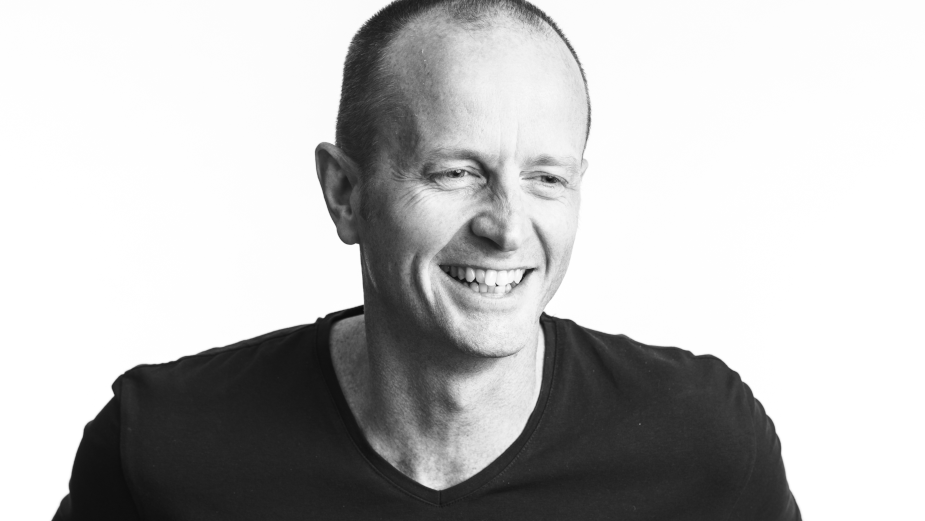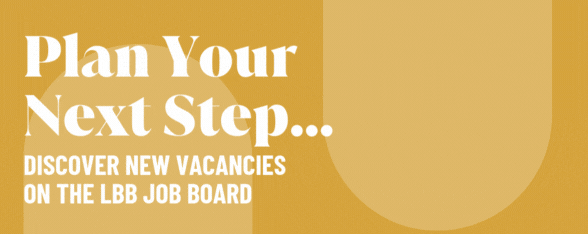
Planning for the Best: The Joy in the Conversation with Gareth Ellen

Gareth is chief strategy officer for Geometry Ogilvy Japan based in Tokyo. He is passionate about harnessing consumer choice and behaviour to inspire the creativity that will unlock growth for clients.
Gareth develops strategy throughout the marketing ecosystem, delivering integrated solutions for the omni-channel world in support of client business goals. Previous to this role Gareth was regional strategy director for Geometry. In this role he was based in Singapore (2.5 years) then China (five years) and worked across the Asia Pacific.
LBB> What do you think is the difference between a strategist and a planner? Is there one?
Gareth> The role of planner is synonymous with the domains of brand and media-based communications and pretty traditional from an advertising agency perspective. That legacy still matters to many, but for me, not so much. Strategists tend to occupy a broader role definition, encompassing customer engagement, experience, social, CRM, eCommerce, etc. When I look at the breadth of skills in my team, I think of strategy and therefore strategists, but understand why some still wish to be referred to as planners. My challenge to teams though is that while clients need to focus on particular aspects of their marketing requirement, they more often than not require a flexibility and broader approach. So, to define a role as only brand and communications is perhaps limiting from a modern marketing perspective. At the end of the day though, I don’t think it matters as their end goal of growth for clients is the same.
LBB> And which description do you think suits the way you work best?
Gareth> I’ve always said I’m not a planner. I didn’t have a traditional path to my current role – starting in digital strategy then working across an increasingly broader strategic remit as my career developed and I became more senior. But that said, I do find myself using the term interchangeably depending on the audience and situation. As much as I would like to say labels don’t matter, when it comes to this, they still do and I don’t mind.
LBB> We’re used to hearing about the best creative advertising campaigns, but what’s your favourite historic campaign from a strategic perspective? One that you feel demonstrates great strategy?
Gareth> I love the Grafitti Stores campaign for Nike Air Max in Brazil. Now the first thing to say is we always tell great stories in case study films, so I’m looking at this from the outside. For me though, it ticks all the boxes. It’s a total experience that connects through cultural relevance; finds an authentic way to position the product; it’s a story with a highly passionate and informed audience; it builds seamless Social and Commerce interaction, and is responsive to changes in circumstances on the ground. Perhaps the idea itself did not immediately jump from the creative brief, but the way in which the campaign hangs together is terrific. It is clearly a collective effort between strategists, creatives, and technologists that was orchestrated as a series of builds from what was happening in the moment in São Paulo and how the team could leverage digital innovation to enable a complete experience. And while the client brief may have read along the lines of 'launch the new Air Max', there was clearly some bravery from all sides in going above and beyond the typical product introduction campaign.
LBB> When you’re turning a business brief into something that can inform an inspiring creative campaign, [what] do you find the most useful resource to draw on?
Gareth> Shout out to my ex-colleague and friend Dani Comar. He has been running a blog, ActivationIdeas.com, for probably 10 years now. He’s a creative leader with a strong strategic sensibility and has a knack for highlighting great work. I find that whatever marketing challenge I am facing, I can always rely on his site for inspiration and a good point of view. I find it useful to look at how other brands have solved problems when thinking about how to approach the situation in front of me before discussing with colleagues and clients. It’s not about replication; it’s the corollary effect. Like Ridley Scott using 'Jaws in space' to sell the concept of Alien.
LBB> What part of your job/the strategic process do you enjoy the most?
Gareth> I love the conversations. And up until two years ago would have added, with a white-board marker in hand. Bringing a diverse group together to wrangle a problem and surface opportunities is the most fun I can have. Getting over that first anxious moment when you have to posit your early thinking, to then listening to different perspectives and challenges, before ultimately, together, shaping the thinking – that’s nectar.
LBB> What strategic maxims, frameworks or principles do you find yourself going back to over and over again? Why are they so useful?
Gareth> Why, when, where. First the why, in equal measure for me and for the client. I HATE doing things for the sake of it or because “that’s the way we’ve always done it.” I need to know why I should care and why the audience should care. Without that I’d rather be riding my bike and let my clients save some money. Second the when, as with Graffiti Stores when in the decision path we galvanise an idea is imperative to new marketing. Models are great to help us organise the plan, but consumers interact when it matters to them – so centre ideas accordingly. And lastly where, a close friend to when, but more about the physical/digital location. Understanding where the required impact on consumer mindset or behaviour is required to be focused. Underpinning all of this of course is the core concept of consumer journey – establishing the moments that matter to the consumer in their life and in association with the category, clarifying the centre of gravity where creative impact is most pertinent, and helping architect a full experience.
LBB> What sort of creatives do you like to work with? As a strategist, what do you want them to do with the information you give them?
Gareth> I love openness. We are a creative agency – and that means everyone – so this requires an openness to ideas and challenge from all corners. And with that, a level of comfort to share and discuss raw thinking versus polished ideas. Furthermore, a focus on volume of thought in the first instance; an expansion of expression not designed to solve the problem but to trigger further thought from others. And what do I want them to do? Get a reaction. Excite me. Make the hair on my arms stand to attention. Bring a tear to my eye. And, if they think I’m mailing it in, tell me to f@ck off and try harder because what I’m talking about doesn’t excite them.
LBB> There’s a negative stereotype about strategy being used to validate creative ideas, rather than as a resource to inform them and make sure they’re effective. How do you make sure the agency gets this the right way round?
Gareth> It should be an infinity loop, not a linear process. A constant process of stimulus and response that continues to feed itself. Sure, sometimes there’s a need to back-fill as ideas can come from left field and were perhaps not explicitly required by the brief, but if they are good they should still connect to some form of impact to the client’s business and therefore deserve back-up. If we find that strategy is only being used to validate creative ideas, then something is broken. Perhaps the original briefs are not inspiring the creative team, so they are forced to go prospecting by themselves or there is a lack of trust and partnership within teams such that the voice of the client goes straight to the creative department uninformed by true insight and intent. Either way, that type of dynamic is not sustainable.
LBB> What have you found to be the most important consideration in recruiting and nurturing strategic talent? And how has Covid changed the way you think about this?
Gareth> The most obvious is curiosity. Table stakes, of course, but something still vital to get the true why of the issue. A very close second, and something that has become even more acute during Covid, is interpersonal skill – with clients and in-agency partners alike – the ability to nuance conversation when many of the senses associated with physical presence are absent, and worse, conversation is highly transactional. Having to inspire, challenge, scrutinise, agitate for ‘better’ in the highly impersonal environment of Teams or Zoom, but with mental dexterity and empathy, is vital. Strategic talent needs to be the glue that holds the team and client together around a shared intent and through the creative process – a reminder of the path and a supporter of the ideas and their demonstrable outcomes.
LBB> In recent years it seems like effectiveness awards have grown in prestige and agencies have paid more attention to them. How do you think this has impacted on how strategists work and the way they are perceived?
Gareth> It’s great to see, but we have a way to go as I’m not sure it has changed our way of working enough. All too often it’s still a reverse process – scrambling for results after the fact. We need to engage clients and bring a constant focus to this agenda – because at the end of the day, the work we do should be delivering business results. And often, our direct clients are detached from the true end outcome – playing an important part along the way, but not attending to the final result. We need to take responsibility for this – and not just one-off success, sustained impact and a culture to push each other to strive for the x-factor in creativity and effectiveness measured by commercial impact.
LBB> Do you have any frustrations with planning/strategy as a discipline?
Gareth> We have gone through a phase of the development of specialisms, which has created a richness of talent but has resulted in silos. This in turn creates a 'not my area' dynamic whereby people can shy away from an opinion or on the flipside be dismissed as lacking the knowledge. But in reality, we are all marketing strategists in some way, shape or form, and we all have a validity. And with this should come a confidence to shape an informed opinion, an openness to accept the views of others, and the humility backed with responsibility to say, “I don’t know, but I’ll find out.”
LBB> What advice would you give to anyone considering a career as a strategist/planner?
Gareth> Listen. There are enough people talking in the world. Pay attention to the voices around you and when the moment is right, speak your mind with clarity and purpose.















